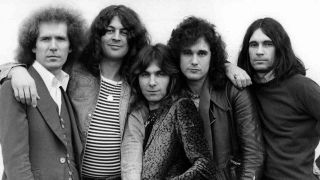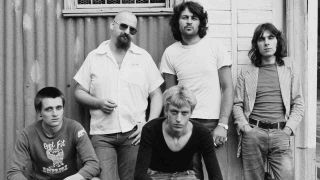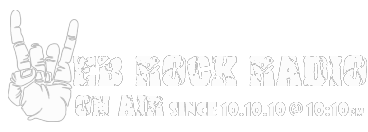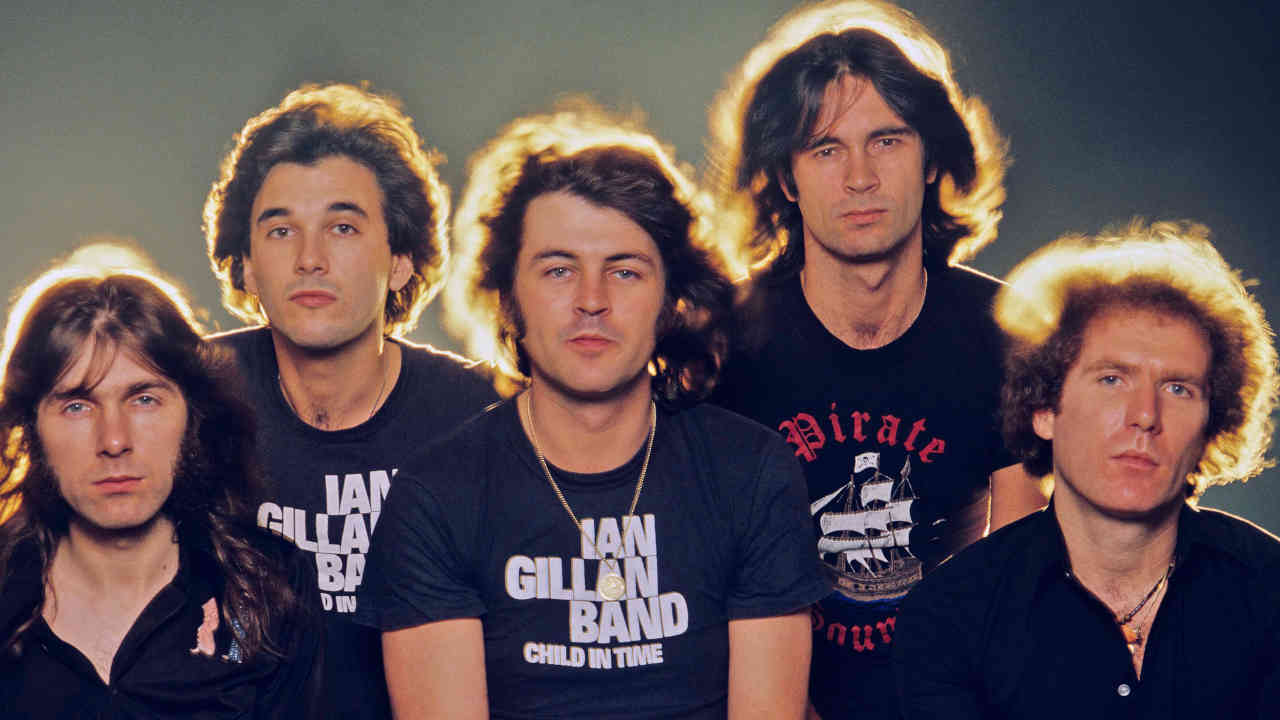“We had collapsed financially – I couldn’t pay the wages. I was on the verge of bankruptcy”: The chaotic story of Ian Gillan’s erratically brilliant solo career

Ian Gillan will forever be known as the singer with Deep Purple’s most successful line-ups. But between 1976 and 1982, he embarked on an eventful solo career that saw him journey from rock’n’roll to jazz rock and back again, nearly ruining himself financially in the process. In 2006, he looked back on the highs and lows of The Ian Gillan Band and the eponymously-named Gillan.
There has never been a dull moment in Ian Gillan’s career. From his 60s bands The Moonshiners, The Javelins and Episode Six to his three separate stints in Deep Purple, via an unlikely one-album service in Black Sabbath, he’s been a fixture of the British rock scene for decades.
But there’s one period of his long and sometimes chequered past that often gets overlooked: his solo years between 1976 and 1982, fronting The Ian Gillan Band and, subsequently, Gillan.
These days, with guitarist Ritchie Blackmore long out of the picture, Deep Purple feels like a happy family. That wasn’t always the case. In 1973, a pissed-off and disillusioned Gillan intended to quit both the band and the music industry for good.
“I didn’t know what to do with myself,” he recalls today. “I had more money than sense. Well, I didn’t actually have the money, it was held for me in various bank accounts. But all I had to do was ask for it.”
Gillan invested that money in three diverse ventures: a London recording studio called Kingsway Recorders (formerly De Lane Lea Studios, where many Purple classics had been recorded); a hotel in the Thames Valley; and a motorcycle-engine manufacturing firm. For a man more used to Space Truckin’ around the stars, the harsh realities of the business world would ultimately hit him hard in the pocket – and cause no end of acrimony in the process. But more about that later.
Gillan genuinely had no intention of rock’n’rolling again, especially after Purple’s old management team had expressed indifference about a diverse set of songs he’d knocked up with session musicians at Kingsway in spring 1974. But the following year Gillan received a fateful phone call from Roger Glover, who he’d known since their pre-Purple combo Episode Six.
Glover – who had been in the Mk II Purps alongside Gillan, and who remains a member of the modern-day band – was staging his Butterfly Ball live show at London’s Royal Albert Hall on October 19, 1975. Ronnie James Dio, then of Ritchie’s Blackmore’s Rainbow, had pulled out and Glover needed a replacement singer urgently.
Gillan: “I agreed to help Roger out. Dio was supposed to do it but Ritchie told him he’d get fired from Rainbow if he did. So I’ve got Ritchie to thank for my return to music. The reception at the Albert Hall was so incredibly warm. I realised I really did enjoy singing. That was when I got the calling again. I returned home, took out my guitar, and I wrote three songs the next day. It was a renaissance for me.”

Recruiting guitarist Ray Fenwick, bassist John Gustafson, keyboard player Mike Moran and drummer Mark Nauseef, Gillan launched a new band under the bizarre moniker of Shand Grenade.
“Fenwick and Gustafson invented that name,” he laughs. “It was a twisted idea about trying to make Shangri-La explode! I went along with it, but soon they called me to a meeting. ‘No one seems to be interested in Shand Grenade,’ they said. ‘We’d better call it The Ian Gillan Band instead.’”
The IGB’s debut album, 1976’s Child In Time, was centred on a reworked version of the title song made famous on Purple’s In Rock album, which itself had been partly recorded at De Lane Lea Studios. A minor success, Child In Time snuck into the chart at No.55. Moran soon bowed out of the group, to be replaced by Mickey Lee Soule and then Colin Towns, and somehow the music veered off into a convoluted jazz-rock direction. Gillan wasn’t best pleased but he went with the frenzied flow.
“I had a few moments when I tried to nudge the guys back into rock’n’roll. But they had dreams of becoming another Weather Report. I tried to get them to focus. I asked them: ‘Didn’t any of you ever listen to Louie Louie?’ It was rather peculiar doing jazzed-up versions of Smoke On The Water, I must admit.
“I can remember the very first gig I ever did with that band,” he continues It was in Scandinavia, and the audience went berserk as soon as we walked out on stage. The crowd was hyped up, ready to headbang and everything else. And our opening number went… dink-dink-adink, dink-dink-a-dink. It was a jazzy, funky thing. It was fun while it lasted but obviously it couldn’t continue.”
After Clear Air Turbulence and Scarabus (both released on Island in 1977), plus a couple of low-key live albums made in Japan, keyboardist Towns came up with a song called Fighting Man. He’d written it with the ‘old’ hard-rocking Ian Gillan firmly in mind.
“Gustafson and Fenwick were just so rude and dismissive about Fighting Man. It was then I realised that Towns was someone I could work with; someone who was incredibly talented and who wasn’t playing games. So I left the band. I didn’t have the guts to fire the rest of the guys. I left my own band.”
Gillan and Towns started again, and a revolving cast of musicians eventually stabilised when guitarist Bernie Tormé replaced Steve Byrd. “We were playing Slough College and as we were going out to get some fish and chips I heard this amazing Hendrixy guitar playing,” Gillan says. “I went back in and I saw this guy in the support band going through an incredible performance. He was eating his guitar, he was down on his knees, and he sounded amazing. It was Bernie Tormé – and he was in our band pretty quick.
Mick Underwood, another old Episode Six man, succeeded Pete Barnacle on drums. With John McCoy on bass, the ‘classic’ Ian Gillan solo band line-up was complete. But to the spiky-haired hordes in gob-encrusted Britain, Gillan – as they were now known – looked like a bunch of ridiculous misfits. McCoy was tall, bearded and lumbering; Underwood was just plain old; and Tormé was a flashy glam-punk with a pirate’s eye-patch and a lighting bolt transfer on his cheek. “Some people said Bernie gave us punk credibility but I never really thought about that.”
But somehow the band had chemistry – and a sense of humour, especially when McCoy strapped on a harness and flew above the stage in the live show like a big, bald Peter Pan.
An album called simply Gillan – although not recorded with all of the above mentioned members – was released in Japan in autumn 1978. An updated version, retitled Mr Universe, emerged in Britain a year later. Albeit briefly.
“Mr Universe did well for a week,” says Gillan. “We went through a list of record companies from A to Z but we couldn’t get a deal. Stiff Records told us to fuck off, and about six or seven other labels said the same thing. We had 28 shows in Britain sold out and no one wanted to know. We couldn’t get arrested. In the end we went back to ‘A’ again and signed to a tiny company called Acrobat.”
I gave Mr Universe a rave review in the October 6, 1979 edition of Sounds: ‘Gillan emerges from limbo and delivers the goods with such power and conviction it’s as if he’s a lean, hungry youngster with a mandrake root in his brain once again… Bernie Tormé’s guitar playing is devastating… Mr Universe really is quite superb.’ I made special mention of the Speed King-style track Roller and its lyrics: ‘Keep your hands on my lever/Watch it while I stab your beaver’ and ‘Smear my blood on your body/And you’ll get N-N-N-N-NO SHIT!’
Released in October 1979, Mr Universe shot to No.11 in the chart. And then Acrobat went bust.
“So Mr Universe disappeared from the charts,” says Gillan. “But after that the phone wouldn’t stop ringing. We decided to sign with Virgin because they’d been back on to us straight away. They were hot, I liked their attitude, and it worked out great. We had some super years with Virgin. Glory Road [1980] was a No.3 album, Future Shock [1981] went to No.2, and we had Double Trouble [also 1981], which was a combination of a live album [recorded at the Reading Festival] and a studio album. And then we had Magic [1982].”

One tends to forget how hugely popular Gillan were in the early 1980s. They toured hard and long, drank excessively, and were practically the house band at Reading for a number of years. As well as their album successes, they had a Top 20 single with Trouble, and a No.2 hit with New Orleans.
“Those were wonderful times. I suppose it was the transition period before I started drifting into middle age. It was a great experience, and it was all fresh stuff. It was the direction I had wanted Purple to go in. Purple had been getting a little too formatted. We had stopped being wild. Listen to Who Do We Think We Are – it’s great, but there’s nothing really edgy there.”
The success of Gillan the band didn’t escape the notice of Ritchie Blackmore. The guitarist turned up at a show at London’s old Marquee Club and afterwards invited Ian to join Rainbow.
“We had a few drinks and it was very friendly. Ritchie said: ‘You should be in my band.’ I said: ‘No thanks; I’m very happy at the moment. Why don’t you join my band?’ He just didn’t get it.”
And neither, at the end of the day, did Bernie Tormé. A major line-up change took place in June 1981 when the guitarist found himself out on his ear. “We were in Germany and there was a bit of a mood going on in the band,” says Gillan. “We had a day off but then we found out that we’d been invited to do Top Of The Pops. Bernie did himself out of a job when he refused to come back to London.”
Janick Gers, who Gillan had seen playing in White Spirit, was immediately installed as Tormé’s replacement. Gers, who went on to become a member of in 1990 Iron Maiden, made his recording debut on Double Trouble. But he received stick from a cabal of rock journos who accused him of being a Blackmore clone.
“I went through that when I started out, when I was being criticised for being an Elvis Presley clone,” says Gillan in Gers’ defence. “That was unfair on Janick – he’s a lovely guy. He’s straight and honest, and you know where you stand with him. I saw an old Purple video the other day and I thought it was Led Zeppelin – Ritchie was copying Jimmy Page to the point where he was wearing identical clothes, and the poses were exactly the same. So what goes around comes around.”
The Gillan band’s extended run of success came to an abrupt halt in 1982. The idea of rejoining his estranged bandmates in Deep Purple had been planted in the singer’s head by an unlikely source.
“The Gillan band had played Hammersmith Odeon and afterwards I went out for a curry with my hero Rodney Marsh, who used to play football for Queens Park Rangers,” says Gillan. “Rodney had enjoyed the gig but he said: ‘What you really want to do, Ian, is get Deep Purple back together again – now that was a band.’ The idea stuck. I made a phone call.”
The idea was appealing. The singer was suffering from nodules on his throat, and there had been some aggro brewing in the Gillan ranks,
“There had been a couple of nasty incidents in the band. John McCoy had hit [manager] Phil Banfield. There was quite a bit of violence going on, there were bad vibes, there were cliques, and there was no money.”
Gillan’s business interests – the recording studio, the hotel and the motorcycle firm – were going down the pan. Kingsway Recorders was in trouble because British Airways had moved in and installed a computer room directly above the studio, which meant the studio could only operate at night. Japanese competitors and the collapse of Norton Villiers Triumph were hurting his motorcycle business. The hotel was being run by a dodgy manager and the builders hadn’t been paid.
“The Gillan members were on an equal share of income, but they weren’t on an equal share of any costs. Things were falling apart. I told them I was thinking of rejoining Purple but I said nothing was going to happen for at least for a year. I went over to meet Ritchie and [Purple manager] Bruce Payne in Connecticut. I came back to Britain and in the meantime Gillan had folded.

“We had collapsed financially – I couldn’t pay the wages. I was on the verge of bankruptcy. The studio had gone; it was in liquidation. The hotel had gone. I had lost the motorcycle company, my car, my house… everything. We couldn’t carry on.”
The Gillan musicians – most notably John McCoy – remain fiercely critical of the manner of the break-up and the resultant financial black hole.
“They’ve called me a liar and everything else. But ask anyone who was on the inside… what I’ve told you is exactly what happened. I owe a huge debt of gratitude to Mick Underwood in particular – he got me the job in Purple in the first place, in a very unselfish way when he was in Episode Six. But I suppose if you look at the bald facts and ask me if I was brutal and inconsiderate of other people’s welfare, well… I was, up to a point.”
Gillan would eventually join the reunited Deep Purple Mk II in 1984, but before that there was that infamous stint in Black Sabbath, which resulted in the Born Again album and a tour that allegedly inspired Spinal Tap’s Stonehenge scene. The Gillan/Sabs union was the result of a night on the booze. “I got drunk with Tony Iommi and Geezer Butler, and when I woke up I was in Black Sabbath,” he says.
These days Ian Gillan looks back on his Gillan band experiences and failed businesses with a wry smile. In fact, the hotel he once owned is still in operation as The Springs Hotel & Golf Club, located in Wallingford, Oxfordshire.
“Ah yes, The Springs,” Gillan reflects. “I renovated and designed the place – it used to be a derelict nursing home. I had been living in hotels for some time, so I thought I’d better get one of my own.
“They now have a golf course but it’s not nearly as impressive as the acoustic-banjo-shaped swimming pool I put in the back garden.” he smiles wryly. “I have declined invitations to visit because they have a dress code.”
Originally published in Classic Rock issue 92

